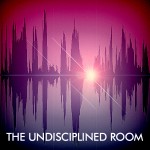For the past four weeks, STA and I have been doing a podcast called The Undisciplined Room. I’m really enjoying experimenting with podcasts; I’ve wanted to try them out for some time now. I know, I’m a little late to the party. Tons of people have been experimenting with podcasts for a long time now. I like doing research for the podcast and then having free-floating conversations about the topics. Well, maybe I like those parts too much. So far, our podcasts are each about 90 minutes. As STA and I discussed in yesterday’s podcast, we need to make them a little shorter. This means I need to stop bringing in so many topics and so many notes. Ha! Easier said than done. To ensure that our podcasts are not so long (too much trouble? too unruly? just too much?), I might post some of my notes and my thoughts here. I’m experimenting with that today by posting some of my notes, with a few additional thoughts, from yesterday’s podcast: Episode 4: I Always Have a Problem with Everything
APPLE’S LATEST ANNOUNCEMENT: iBooks Author + iBooks2 + iTunesU app
a. Apple and the Digital Textbook Counter-Revolution: is it revolutionary?
b. Reflections on the Apple Education Event
c. Apple introduces tools to someday supplant textbooks
If you don’t know what these apps/new Apple products are, check out the above links for an introduction. I’ve downloaded the iBooks Author app and experimented just a little with it. I have a few ideas about using it in relation to my trouble blog/research. At first, I was thinking of using it to create an introduction to the blog and to troublemaking. After talking with STA on the podcast, I have another project in mind too: A book (or a series of books?) on my queering feminist virtues, including troublemaking. I’ll need to think through what other virtues that I might want to add. In the past I’ve researched/written about courage and vigilance/persistence.
In preparation for our discussion, I wrote the following:
I don’t like textbooks: I’ve never used them for teaching. I was reminded of this when I read Hack Education’s post and her critique of textbooks as having students focus on secondary materials instead of primary ones. Maybe that’s helpful in science, but in the humanities, reading primary sources (and expanding what counts as and who is included as) is very important, especially for my own pedagogy. Can students handle primary sources? Trying to read these sources might make them uncomfortable in productive and/or valuable ways.
What interactive possibilities does it offer? Kathleen Fitzpatrick laments the lack of interactivity between readers or between author and reader; the interactivity is only between the individual user and the text. Here’s what she writes:
But there are some notable gaps here, as well. The textbooks that can be produced with iBooks Author and read in iBooks 2 are interactive, in the sense of an individual reader being able to work with an individual text in a hands-on fashion. They do not, however, provide for interaction amongst readers of the text, or for responses from a reader to reach the author, or, as far as I can tell so far, for connections across texts. The “book,” though multimediated, manipulable, and disembodied, is still a discrete, fairly closed object.
I think this is an important point. However, I wonder if that interactivity between readers and the reader and author is always necessary. What intimate (whatever that might mean) connections between a reader and a text get lost when we make everything social/interactive? Personally, even as much as I like twitter and blog comments (yes, I like blog comments), I don’t always want to know what others–even the author–think about a subject. I like to imagine my own possibilities. I am fighting back a digression about the creative process and problems with “groupthink” here. It’s hard to not talk about it, since it’s all over the interwubz these days (here and here and here).
In addition to the question of whether or not interactivity between readers is always a good thing, I like what tubbsjohn has to say about where that interactivity could/should take place in their comment on Fitzpatrick’s post:
Since the book is interactive, why not point the student out to an existing webservice such as a threaded discussion, a collaborative writing space, file uploads, photo sharing and others (behind your school’s authentication gates likely) that provide the sort activity you’d like the students to engage in. This way you can keep the ebook at the core the course but have diversions away from the book to activities that do it the way you’d like it. A simple thought but one that comes up in student responses to ereading: I want the book open AND my notebook or other activity open. This book/browser arrangement is just what the student is looking for.
I like their focus on both/and (the non-interactive/”closed” book AND other interactive options) and opposed to one or the other. As I write this, I also wonder about yet another option beyond either/or and both/and: How about getting rid of the book altogether? For my feminist debates class this past semester, I almost exclusively assigned blog posts.
Before moving on to a new, yet related, topic, I want to give a SHOUT-OUT to a “totally awesome blogger” that I just discovered: Hack Education This blogger/tech ed writer looks really cool. She has a master’s in women’s studies and wrote about political pranks. She calls herself a rabble-rouser and is ABD in comp lit. I’m excited/curious to check out her writings and to see how her women’s studies training and her rabble rousing influence her writing/reflections on tech ed. question How does feminist training influence one’s approaches to technology? Should one be explicit about their influences? If so, how? Questions about whether or not to claim one’s feminism (and how one might do that) come up a lot in my classes and I’m always interested in exploring how others grapple with them.
Stanford professor who taught AI class online to 160,000 students. Is this the future of education?
a. Tenured Professor Departs Stanford U, Hoping to Teach 500,000 Students at Online Start Up
b. Check out his video talk too.
In the Chronicle article, the professor writes:
I feel like there’s a red pill and a blue pill,” he said. “And you can take the blue pill and go back to your classroom and lecture your 20 students. But I’ve taken the red pill, and I’ve seen Wonderland.
In my tweet about the quotation, I ask: What about a purple pill? Can we find ways to think about education technology within traditional academic spaces or without wholly rejecting traditional academic spaces? What is the role of traditional higher education? Should all courses be free? I will be pondering and struggling with these questions all year as I attempt to figure out my own role in relation to the academy. I see tremendous value in new technologies and moving outside of traditional (increasingly isolating and prohibitively expensive) academic spaces. Yet, I still see value in higher education; I loved my experiences as a student at a small liberal arts college and am not ready to give up on higher education altogether.
Okay, that’s some (yes, only some!) of my notes from yesterday’s podcast. I like continuing the conversation (well, at least continuing my engaging with the ideas) over here on my trouble blog. Maybe I’ll try it again next week.


